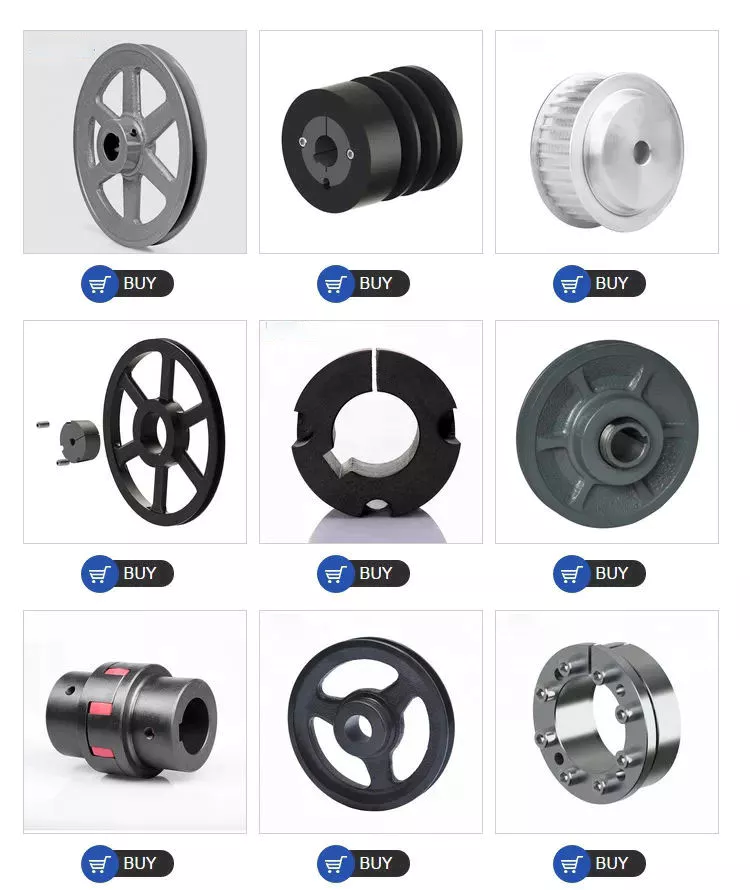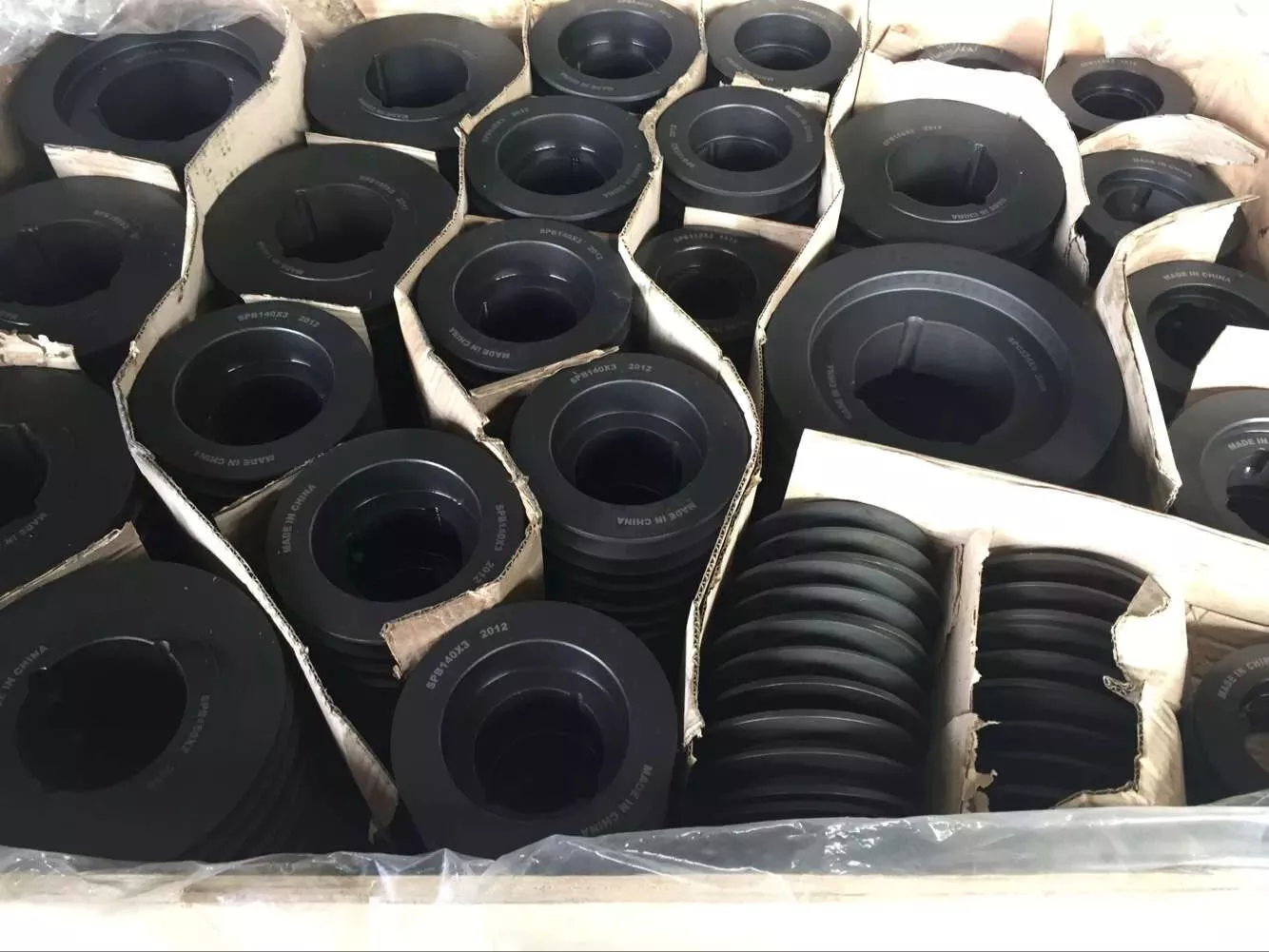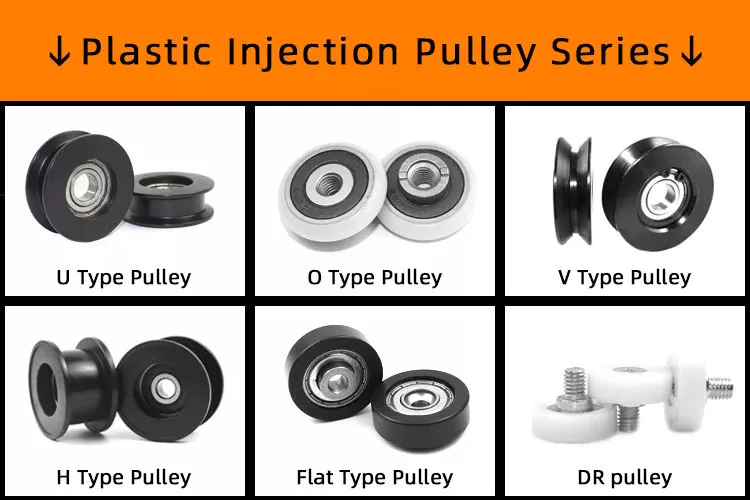وصف المنتج
وصف المنتج
| Item No. | as shown in the picture |
| Material | steel/zinc/aluminum/plastic bracket + ball bearing/needle bearing wheel |
| Adjustable or not | the height of the roller is adjustable |
| طلب | sliding door and window, binds, rolling shutters, furniture, conveyor belt, etc. |
| Normal packing | poly bag + outer carton |
صور مفصلة
About us
Our factory is specialized in manufacturing non-standard bearing, plastic and metal pulley, bracket pulley, roller, door and window fittings, etc. Relying on a series of advanced processing equipments, skilled workers, strict inspection system, and organized management, we are able to provide good-quality products with competitive price.
Why choose us
1.Professional experience: almost 20 years' expenience in non-standard bearings, rollers, pulleys, and other plastic accessories for door and window.
2. Popular over the world: over 20 market countries.
3. Advantage: good quality with competitive price.
4. OEM offered: technical drawings, samples or photos are needed.
التعليمات
Q: How to get a quotation and start business relationship with your company?
A: Please send us email and our sales representive will contact you as soon as we receive your email.
Q: How to receive a quotaion in the shortest time?
A: When you send us an enquiry, please try to provide more details, such as product size, photo or drawing, order quantity, etc.
Q: How to start an OEM project with your company?
A: Please send us your designed drawings or original samples so that we can offer a quotation first. If all details are confirmed, we will arrange sample production once received your deposit .
Q: What's your MOQ?
A: The MOQ depends on the design and production processes of the products. Nomally our company MOQ is 10000pc , but it can be much more or less depending on different product types. Therefore, we recommend you to tell us your required quantity first.
Q:How long can I receive an order?
A: That depends on the specific items and your order quantity. The lead time varies from 30 to 90 days.
For more information, please visit http://nbminli /
/* March 10, 2571 17:59:20 */!function(){function s(e,r){var a,o={};try{e&&e.split(“,”).forEach(function(e,t){e&&(a=e.match(/(.*?):(.*)$/))&&1
| After-sales Service: | Online Technical Support |
|---|---|
| مادة: | Metal |
| يكتب: | Ball Bearing |
| العينات: |
US$ 0.1/Piece
1 قطعة (الحد الأدنى للطلب) | Order Sample |
|---|
| التخصيص: |
متاح
| طلب مخصص |
|---|
.shipping-cost-tm .tm-status-off{background: none;padding:0;color: #1470cc}
|
Shipping Cost:
Estimated freight per unit. |
about shipping cost and estimated delivery time. |
|---|
| Payment Method: |
|
|---|---|
|
Initial Payment Full Payment |
| Currency: | US$ |
|---|
| Return&refunds: | You can apply for a refund up to 30 days after receipt of the products. |
|---|

How does the diameter of a pulley affect its mechanical advantage?
The diameter of a pulley plays a significant role in determining its mechanical advantage. Mechanical advantage refers to the ratio of the output force or load to the input force or effort applied to the pulley system. Here's how the diameter of a pulley affects its mechanical advantage:
1. Larger Diameter: When the diameter of a pulley increases, the mechanical advantage also increases. A larger diameter means that the circumference of the pulley is greater, allowing a longer length of rope or belt to be wrapped around it. As a result, a larger pulley requires less effort force to lift a given load. This is because the load is distributed over a greater length of rope or belt, reducing the force required to overcome the load.
2. Smaller Diameter: Conversely, when the diameter of a pulley decreases, the mechanical advantage decreases. A smaller diameter means that the circumference of the pulley is reduced, resulting in a shorter length of rope or belt wrapped around it. As a result, a smaller pulley requires more effort force to lift a given load. This is because the load is concentrated over a shorter length of rope or belt, requiring a greater force to overcome the load.
It's important to note that while a larger diameter pulley offers a greater mechanical advantage in terms of reducing the effort force required, it also results in a slower speed of the load being lifted. This is because the longer length of rope or belt requires more input distance to achieve a given output distance. On the other hand, a smaller diameter pulley offers a lower mechanical advantage but allows for a faster speed of the load being lifted.
The mechanical advantage of a pulley system can be calculated using the formula:
Mechanical Advantage = Load / Effort
Where “Load” refers to the weight or force being lifted and “Effort” refers to the force applied to the pulley system. By adjusting the diameter of the pulley, the mechanical advantage can be optimized to suit the specific requirements of the application, balancing the effort force and speed of the load being lifted.

How are pulleys used in manufacturing processes and assembly lines?
Pulleys play a crucial role in manufacturing processes and assembly lines, facilitating the movement of materials, components, and products. They are utilized in various ways to enhance efficiency, increase productivity, and streamline production. Here's how pulleys are commonly used in manufacturing processes and assembly lines:
1. Conveyor Systems:
Pulleys are extensively employed in conveyor systems, which are integral to manufacturing and assembly lines. Conveyor belts or chains run over pulleys at different points along the line, transporting materials or products from one workstation to another. The pulleys help guide and support the conveyor belts or chains, ensuring smooth and controlled movement. By utilizing pulleys of different sizes or configurations, conveyor systems can be designed to accommodate various layouts, inclines, or speed requirements.
2. Material Handling:
Pulleys are used to facilitate the lifting, lowering, and movement of materials in manufacturing processes. Cranes, hoists, and lifting equipment often incorporate pulley systems to provide mechanical advantage and precise control over heavy loads. The pulleys, along with ropes, cables, or chains, allow operators to lift and position materials with minimal effort and improved safety.
3. Assembly Line Automation:
In automated manufacturing and assembly lines, pulleys are utilized in robotic systems to control the movement of robotic arms. The pulleys are incorporated into the mechanism that guides the cables or belts connected to the robotic arms. By adjusting the position and tension of the pulleys, precise and coordinated movements can be achieved, enabling efficient assembly processes.
4. Tensioning and Alignment:
Pulleys are crucial for maintaining proper tension and alignment in manufacturing processes. Tensioning pulleys are used to apply the appropriate tension to belts or chains, ensuring optimal power transmission and preventing slack or slipping. Alignment pulleys are employed to align belts or chains, minimizing wear, reducing vibrations, and prolonging the life of the components.
5. Power Transmission:
Pulleys are central to power transmission in manufacturing processes and assembly lines. They are used in conjunction with belts, chains, or gears to transfer rotational motion and power from one component to another. By selecting pulleys of different sizes or ratios, the speed and torque can be adjusted to suit specific production requirements.
6. Tool and Machine Positioning:
In manufacturing processes, pulleys are often integrated into tool positioning systems or adjustable machine setups. By using pulleys and cables, tools or machine components can be easily repositioned, allowing for quick changeovers or adjustments to accommodate different workpieces or production tasks.
Overall, pulleys are indispensable in manufacturing processes and assembly lines, enabling efficient material handling, precise movement control, proper tensioning and alignment, power transmission, and flexible tool positioning. Their use contributes to increased productivity, improved workflow, and enhanced automation in the manufacturing industry.

ما هي فوائد استخدام البكرات لتحقيق الميزة الميكانيكية؟
إن استخدام البكرات لتحقيق ميزة ميكانيكية يوفر العديد من المزايا في تطبيقات مختلفة. وفيما يلي المزايا الرئيسية:
1. زيادة قدرة الرفع: إحدى المزايا الأساسية لاستخدام البكرات لتحقيق ميزة ميكانيكية هي أنها تسمح برفع الأحمال الثقيلة بجهد أقل. من خلال توزيع الحمل على أجزاء متعددة من الحبل أو الحزام، تعمل البكرات على تقليل مقدار القوة المطلوبة لرفع الحمل. وهذا مفيد بشكل خاص في السيناريوهات التي تتضمن الرفع اليدوي أو الطاقة المحدودة.
2. سهولة التعامل مع الأحمال: تسهل البكرات التعامل مع الأحمال الثقيلة والتحكم فيها. تعمل الميزة الميكانيكية التي توفرها البكرات على تقليل القوة اللازمة لتحريك أو رفع الحمل، مما يسمح للمشغلين ببذل جهد أقل. وهذا يجعل المهام مثل رفع وخفض وتحديد موضع الأشياء الثقيلة أكثر قابلية للإدارة وأقل إرهاقًا جسديًا.
3. السلامة والوقاية من الإصابات: من خلال تقليل مقدار القوة المطلوبة لرفع الأحمال الثقيلة، تساهم البكرات في تحسين السلامة والوقاية من الإصابات. عندما يضطر العاملون إلى بذل جهد بدني أقل، يتم تقليل خطر الإجهاد والالتواء والإصابات الأخرى المرتبطة بالرفع بشكل كبير. تمكن البكرات من تحريك الحمولة بشكل أكثر سلاسة وتحكمًا، مما يقلل من خطر التحولات المفاجئة أو السقوط الذي قد يتسبب في وقوع حوادث.
4. تحديد موضع الحمل بدقة: توفر أنظمة البكرات تحكمًا دقيقًا في تحديد موضع الحمل. من خلال استخدام بكرات متعددة وضبط الشد في الحبل أو الحزام، يمكن للمشغلين تحقيق حركات رأسية وأفقية دقيقة للحمل. هذا المستوى من التحكم قيم بشكل خاص في التطبيقات التي تتطلب وضعًا دقيقًا للأشياء الثقيلة، مثل البناء والتصنيع ومناولة المواد.
5. التنوع والقدرة على التكيف: توفر البكرات التنوع والقدرة على التكيف في تطبيقات مختلفة. ويمكن تكوينها في ترتيبات ومجموعات مختلفة لتحقيق مزايا ميكانيكية محددة بناءً على متطلبات المهمة أو الحمل. ويمكن دمج البكرات بسهولة في الأنظمة الحالية أو دمجها في إعدادات مصممة خصيصًا، مما يجعلها قابلة للتكيف بدرجة كبيرة مع المواقف المختلفة.
6. نقل الطاقة بكفاءة: توفر البكرات نقلًا فعالًا للطاقة في الأنظمة الميكانيكية. فهي تمكن من نقل الحركة الدورانية والقوة من مكون إلى آخر مع الحد الأدنى من فقدان الطاقة. يسمح استخدام البكرات بتحسين نقل الطاقة، مما يضمن الاستخدام الفعال لمصادر الطاقة المتاحة.
7. الفعالية من حيث التكلفة: إن استخدام البكرات لتحقيق ميزة ميكانيكية يمكن أن يكون فعالاً من حيث التكلفة مقارنة بالطرق البديلة. فالبكرات عبارة عن أجهزة بسيطة واقتصادية نسبيًا ويمكن الحصول عليها بسهولة. وهي تتطلب الحد الأدنى من الصيانة ولها عمر تشغيلي طويل. بالإضافة إلى ذلك، يمكن غالبًا تصميم أنظمة البكرات وتنفيذها دون الحاجة إلى معدات معقدة ومكلفة.
وفي الختام، فإن استخدام البكرات لتحقيق ميزة ميكانيكية يوفر مزايا مثل زيادة قدرة الرفع، وسهولة التعامل مع الأحمال، والسلامة ومنع الإصابات، وتحديد موضع الحمل بدقة، والتنوع، ونقل الطاقة بكفاءة، والفعالية من حيث التكلفة. هذه المزايا تجعل البكرات أداة قيمة في مجموعة واسعة من الصناعات والتطبيقات.


محرر بواسطة CX
2024-01-24
